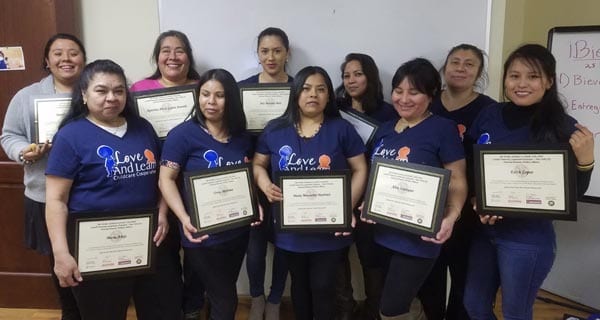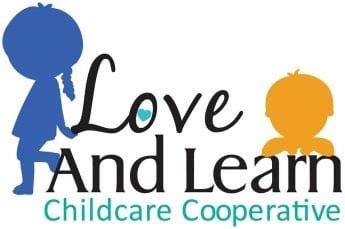
Staten Island Parents Discuss How They Manage Their Kid’s Severe Allergies
When a child has the occasional common cold or stomach bug, parents often feel helpless as their kids suffer through the symptoms for a few stressful days. But, when a child is diagnosed with a severe food or environmental allergy, it can totally transform a child’s daily routine and lead to a lifetime of pain and suffering — with little relief and lots of worry, Staten Island parents said.
Calling 911 as she watched her two and half year-old daughter Cristina vomiting, turning shades of green and yellow, and having trouble breathing is a horrifying memory that Francine Brown will never forget.
Yet, the Huguenot mother said the experience taught her that life would never be the same when caring for a child diagnosed with a severe, life-threatening food or environmental allergy.
Unfortunately, she and other Staten Island parents aren’t alone — anaphylaxis to food results in 30,000 emergency room visits and 2,000 hospitalizations annually, according to the U.S. Food & Drug Administration.
At the time, Ms. Brown didn’t realize that her daughter was in the middle of anaphylactic shock after eating a cashew nut.
Anaphylaxis is a severe, potentially life-threatening allergic reaction that can occur within seconds of exposure to a food or allergen and triggers an immune system reaction that includes declining blood pressure, narrow airways, blocked breathing, skin rash, nausea and vomiting.
“She started with an itchy throat,” the Huguenot mother recalled. “Within seconds her lips and eyes swelled up like blisters,” she explained. She turned pale like a ghost.”
The words “Mommy, I can’t breathe” sent her into a panic during the ordeal and she frantically feared for her daughter’s life in the back of an ambulance.
“It took about six to seven hours before she woke up and started to be herself again,” Mrs. Brown said.
Life is not the same
Later, tests revealed Cristina was allergic to peanuts and tree nuts — today, her condition has dramatically changed her life and her family must take huge precautions in their everyday, normal routines.
Over 6 million children in the United States have food allergies, according to a new study from Northwestern Medicine in Chicago.
“As a parent it is the scariest thing ever,” Mrs. Brown said. “Everywhere we go it’s a huge concern.”
To make matters worse, her daughter — now a 5-year-old kindergartner — is also asthmatic, but regulated with medication and can participate in outdoor activities, like playing soccer.
“I worry every second of the day about her life — especially in school,” Mrs. Brown said.
Today, 1 in 13 kids has a food allergy, which translates to 2 kids in every classroom, according to 2019 statistics in the Northwestern study conducted by board-certified pediatrician and health researcher Dr. Ruchi Gupta.
Cristina, like many youngsters, loves to dance and is a Girl Scout — but her daily routine is highly impacted by her food allergies.
Her daughter has a paraprofessional at school, and can’t go anywhere without antihistamines, like Benadryl, and Epinephrine — a self-injectable medication known as an Epi-pen that is approved by the FDA to reverse severe allergy symptoms.
All family members are knowledgeable about how to administer her medication if needed — and about her limited diet, according to her mother.
The family is extra cautious when eating out and avoids foods, such as bakery items, ice cream, sprinkles, and Asian food. They almost always avoid having desserts at restaurants — unless the waiter takes a photo of the label for Mrs. Brown’s careful inspection.
They also avoid sleepovers, playdates — unless they occur at her house — and taking vacations outside of the United States.
“I carry snacks and food with me at all times,” Mrs. Brown said, adding that she supplies a container of nut-free snacks at school and brings her own desserts to birthday parties.
“We have been at a birthday party were they gave out ice cream cones with peanuts on it — we simply packed our bags and left,” she explained.
Meeting the challenge
When a severe peanut allergy sent Alex DeMeo to the emergency room at two years old after the introduction of peanut butter, his life went from playful toddler to anxious youngster, according to his mom Janine DeMeo of Princes Bay.
“As per his doctor, we rubbed a little up his leg, and worked up to his neck,” she said. “He had no reaction so we gave it to him on a cracker; he licked a little off and didn’t seem to like it.”
The area around his mouth was a little irritated, but his skin is sensitive and he seemed unfazed by the newly tested food, she explained.
“Within minutes he began vomiting,” his mom recalled. When vomiting continued after Benadryl was administered, they headed to the ER and he recovered after being given steroids, she explained.
He was later diagnosed as anaphylactic to peanuts, tree nuts, beans, peas, and mustard, and is one of the 1.6 million children affected by peanut allergies, according to Dr. Gupta’s study. Another 1.4 million are allergic to milk.
Now 9, his severe allergies hinder his daily activities, and his mom worries about the medical and social impacts.
“He has a lot of anxiety because of his food allergies,” Mrs. DeMeo said. “If he develops a random cough or irritation we both panic.”
The fear and anxiety is heightened when trying a new food — or unfamiliar conditions, she added.
“He always makes sure to ask what’s in what he’s eating, but he’s still young and really only trusts me to serve him — or to tell the server at a restaurant about his allergies,” she explained.
Besides avoiding snacks at school parties and elsewhere, Alex sits at a separate lunch table at school — and exhibits social and food anxiety, according to his mother.
“I am so worried as this allergy has stifled him,” Mrs. DeMeo said. “I feel that he feels different, left out,” she said. “We’ve thankfully never really encountered a situation where he has felt left out, or told he can’t have anything because of his allergies, but I know he feels different.”
Mrs. DeMeo tries to make life as normal as possible for her son, but it is a challenge — especially because Alex is an active fourth-grader who loves to watch and play baseball and wants to do things other kids do.
“He can’t just go for ice cream in the summer like all the other children,” she said. “He’s had to give up all the yummy desserts that all other children get to enjoy.”
In addition, she tries to allow him to enjoy his hobbies and interests — with minimal stress.
“We try not to avoid situations entirely because it’s not realistic,” Mrs. DeMeo said. “We go to baseball games, but we are very aware of people around us. We fly, but are very cautious and preboard.”
Older kids, growing worries
The heightened concern doesn’t get any easier when the child is older — especially if an allergy unexpectedly presents itself in the teenage years.
Deidre Noto-Piccolino knows firsthand how unnerving it can be to live with an allergy-impacted lifestyle after her son, Peter, suddenly became highly allergic at age 15 following surgery for osteoid osteoma on his tibia bone.
Shortly after surgery, crackers, juice, and other foods were bothersome to his throat — and one episode of eating cookies and peanut butter led to his throat closing up and he couldn’t breathe, she explained.
“It was diagnosed within that week that he was allergic to shellfish, peanuts, high fructose corn syrup, all corn products, and sesame,” Mrs. Piccolino said.
The surprising diagnosis triggered a new regime for Peter, now 19, after a lifetime of previously eating the foods that now are life-threatening to him.
“I am very concerned for him because his diet is not balanced at all,” his mom said. “It is very difficult to food shop for him,” she added. “I am so worried that he is just going to slip up one day and end up having to call 911 when he isn’t around me.”
Like others, Benadryl and Epipens are critical necessities — and heightened concern over food labels, hand-washing, and interaction with others have become the norm.
They try to minimize risk through being diligent, cautious, and careful when it comes to shopping, eating, cooking, dining out, and socializing.
“He has to be mindful of washing or sanitizing his hands after touching items or handshaking,” his mom explained.
She said a recent example of his high sensitivity occurred when he ate some finger foods without washing his hands after his dad handed him a key after touching almonds.
“He started having reactions immediately,” Mrs. Piccolino said, noting that the high fructose corn syrup and corn products are the most impacting on his life because they are so prevalent in foods, with sesame a close second.
“It is not easy to go out anywhere with him,” she said, adding that food has to be specially purchased, ordered, washed, prepared and cooked — and he has to bring his own food to work.
“As a teenager, he likes a slice of pizza or soda once in a while,” his mom said. But, he is limited to one pizzeria and can only drink Coke processed in Mexico.
She said he is very cognizant of his allergies and precautions — and will starve himself if he doesn’t have his foods or can’t guarantee that it will be cooked properly when dining out.
“He had had to learn to be very aware of his surroundings,” Mrs. Piccolino said.
“This is very difficult for him to handle as a young adult who likes to be very social, but holds himself back from going out with friends to different places because he has no control over what is going to happen or when it is going to happen.”
Be on guard, educate
Staten Island parents of children with severe allergies say education is key.
“Make sure they understand the importance of washing hands continuously, keep medication with them at all times, make sure the people they are with know about the allergies and the warning signs,” Ms. Piccolino suggested.
“All of Peter’s friends and his girlfriend are aware of his allergies and know what to do in case of an emergency,” she added.
Mrs. DeMeo advised parents to make sure restaurants can and will accommodate a child’s allergy, and frequent places that make children feel familiar and comfortable.
“We have mostly vacationed in Disney because Alex feels safe there,” she said.
One other positive aspect is his closest friends also have the same food allergies, “so going to friends homes is comfortable for him,” his mom noted.
While she can’t control people’s use and consumption of nuts, she can prepare her son for the future.
“We can’t ban them from everywhere, however, I do believe people can do a better job to teach their children compassion and empathy,” she said.
Mrs. DeMeo hopes as Alex gets older, he will be able to manage his allergies and have less anxiety. “I have done my best to teach him that he lives in a world with his allergens and it’s my job — and eventually his job — to make sure he can navigate in this world,” Mrs. DeMeo said.
Cristina Brown’s knowledge of her condition has advanced in the nearly three years since her frightening episode — but not to the point where Mrs. Brown can trust her on her own yet.
“The day will come where I have to let go and that thought is even more frightening,” she added.
She recommends other parents take one day at a time, always be aware, read labels carefully, and never be embarrassed to leave an uncertain, unsafe, or uncomfortable situation.
“Never let your guard down,” she said.
By Christine Albano








